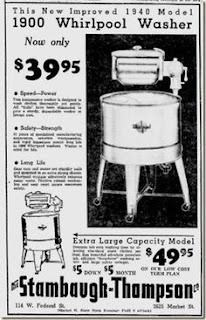While plotting out my current work in progress, Winning the Widow's Heart - Book 2 set during the Civil War, I needed to uncover--forgive the pun--how our great-great-grandmothers diapered their children.
Weather permitting, native American babies might have gone without pants, and would potty train early. Absorbent materials like moss, grass or weeds might be stuffed around a baby's bottom before he was wrapped up tightly in a cradleboard. When soiled, the material would be discarded and decompose naturally. In colder climates, mothers might use covers made of animal skin.
Used as a diaper material since ancient times, rabbit skins were especially sought-after since they were soft and gentle on delicate baby skin. Additionally, they were incredibly absorbent, holding up to 30% of its own weight in moisture, making it an ideal material for keeping babies dry.
In Colonial times until the late 1800s, diapers were made from cotton, muslin, flannel or linen. While waiting for their little one to make an appearance, it was a good way for mothers to keep busy, and a useful way to re-purpose worn-out clothes.
Because they were handmade, the shape of diapers varied. They might be squares, rectangles, or triangles. Fasteners could be buttons, sewn-on ties or straight pins (Yikes!) The modern safety pin wasn't invented until 1849. Wool covers (soakers, pilchers) were sometimes used, but generally babies only wore diapers.
Burnt flour, witch hazel, bee pollen, and beeswax were often used for diaper rash.
Because the colonies were still tied closely to England, colonists referred to diapers as napkins, "nappies", or clouts (a piece of cloth or leather). Mothers could purchase yards of special diapering cloth made of linen or muslin.
As the westward movement progressed, pioneer women carried on the same practices of diapering. However, their choices of fabric were severely limited unless they brought a layette with them.
How Diapers Were Laundered
Mothers usually set aside a day or two each week to tend to the family's laundry, since water was scarce (especially on the Plains), and the work backbreaking. Often, women just rinsed and wrung out the wet diapers and hung them to dry. Can you imagine the odor when diapers were dried by the fireplace in the winter... Ew!
Soiled diapers would be scraped, rinsed and set aside for washing.
New Century...New Innovations...Disposables & More
In the late 1880s, all-cotton cloth diapers were mass-produced. Mothers were encouraged to sanitize diapers by boiling them before re-using.
A welcomed boost arrived in the 1940s and 1950s when washing machines became more affordable.
Even with these advancements, many women still sewed diapers and covers at home. During and after World War II, there was a shift in the use of cloth diapers-- namely, a shortage of cotton, and the flood of women into the workforce. With less time for housework, mothers looked for innovation and convenience. As a result, diaper washing services delivered diapers daily alongside their milk and eggs.
In 1942, a Swedish inventor created the first throwaway diaper made of paper; in 1947, Valerie Gordon created a disposable diaper made from parachutes, cotton wadding, and wool. A housewife, Marion Donovan, filed a patent for a reusable cover. She was a young mother struggling with a leaky cloth diaper. She took down her shower curtain, ripped it up, and stitched it into a waterproof diaper cover using a sewing machine. She called her invention, 'Boater', utilizing snaps instead of pins, allowing for a better fit. She later used nylon parachute material.
But despite progress in the design of washable diapers, disposables had become the wave of the future. Convenience, absorbency, fit, and lower incidence of diaper rash were the major selling points. Pampers© produced its first disposable diaper in 1951, complete with flushable insert. What made Pampers© an instant success was that they used cellulose fibers instead of paper fibers.
The Modern Cloth Diaper
The properties of cloth diapers have changed dramatically over the last 150 years. While many of properties are the same, including prefolds, flats, and diaper covers, parents can purchase all-in-one diapers, hybrids, and pocket diapers that replicate the ease of the disposable diaper.
In the 1990, when global warming was first being tossed around, and parents began to understand the environmental impact disposable diapers had on the planet, cloth diapers began their resurgence.
Gratefully, we were fortunate enough to buy disposable diapers when our children were born...
...which brings me back to the reason for my research on diapers since they play a minor role in the romance between Sofie Bishop, a Georgia widow, and Yankee captain, Seth Ramsey.
Releases April 26th!













No comments:
Post a Comment